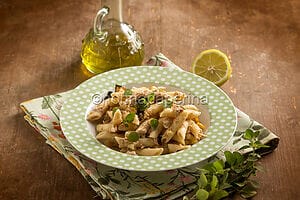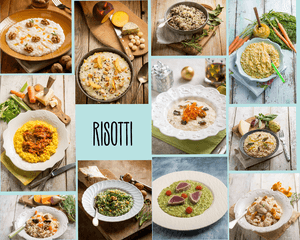Pears

The characteristics and nutritional properties of pears
Though they might not be the most well-liked fruits overall, they are undoubtedly among the most consumed and widely distributed. However, you do not have to underestimate pears when it comes to their nutritional value. Because of their high vitamin content, which includes vitamins A, E, and several B vitamins, pears are considered nutritious fruits. Minerals, including calcium, magnesium, phosphorus, and potassium, are also abundant in it. The pear’s high calcium content makes it a vital dietary component in the fight against osteoporosis.
They ripen from July to October. The typical pear tree is above average in height, its branches appear lush, and it is noticeably solid. The ability of pears to be preserved is one of their most valuable qualities. Even after a few weeks, they will remain mostly intact if exposed to the cold.
The different varieties
As with other fruits, the varieties of pears are numerous and truly characteristic. Here are the most common ones in Italy:
- Williams. It is round in shape, uniform in colour, and has a juicy, medium-sweet pulp.
- Max Red Bartlett. The peel is yellow with occasional red shades. It is mainly used for syrups and juices.
- Decana. It is characterised by a greenish skin and a juicy but very compact pulp. It is ideal for raw consumption.
- Abate Fetel. The dimensions are accentuated, and the shape is rather elongated. The pulp is extremely juicy, very sweet, and aromatic.
- Kaiser. A medium-sized pear with pale pulp and brown skin. It’s gritty and medium-sweet.
- Spinella. It is characterised by a distinctly compact pulp that is not very juicy, not very sweet, and slightly acidic.
- Madernassa. Large in size with extremely compact pulp. It is one of the few varieties that requires (preferably) cooking.
Some pear-based recipes
In addition to being delicious, pears are very adaptable. What matters in this sense is, above all, the variety, but in general, they are perfect both for raw consumption and for cooked recipes. I’ve included a list of some extremely intriguing recipes in this section.
Risotto with pears and Petit Pont. Who said pears are only suitable for desserts? In reality, they can also be used as a condiment for first courses, as demonstrated by this splendid risotto. In this recipe, the pears are sliced and added to the cooked rice right before it turns creamy.
Lasagnette with pear and gorgonzola. Another first course that makes use of the presence of pears. Specifically, the fruit acts as a substitute for the solid elements of the lasagna filling (meatballs, hard-boiled eggs, etc.). Furthermore, together with gorgonzola, it forms a truly apt and tasty combination.
Pears in rum. Let’s now move on to desserts with a fantastic rum preserve. The procedure is simple, although a little laborious: just pass the pears in a syrup and put them in the jar, then cover everything with the remaining syrup and rum. This dessert is perfect for a snack but can also be integrated into cakes as a refined garnish.
Chocolate pear tart. It is a unique tart, as it is based on a truly unique combination. The chocolate appears in the form of cream, acting as a garnish for the tart. The pears, however, act as a garnish, together with the crunchy component given by the walnuts.
The best varieties for raw consumption
I have already introduced the main qualities of pears, but I think it is useful to delve deeper into the topic since we are talking about a nutritious and very versatile food.
So, what are the most suitable pear varieties for raw consumption? For this type of consumption, it is best to opt for fairly juicy and crunchy varieties, which provide good sensations on the palate. The Williams variety could be part of this category, as they contain a lot of juice and offer a medium-high level of sweetness.
From this vantage point, the Guyot pear is particularly intriguing since it sticks out for having a distinct consistency and a flavour that is both pleasing and gritty. It’s small in size with a highly sweet flavour and a thick, easily removable skin.
The best types of pears for desserts
The pears should show a marked sweetness but at the same time boast a rather firm consistency, capable of resisting high temperatures. This applies regardless of the cooking methods, which often boil down to the use of the oven (as in the case of tarts) or tossing them in a pan with sugar in order to caramelise the fruit.
However, there are various types that have these properties. Above all, the Martin Sec pear stands out, boasting a grainy and very firm consistency. The flavour is sweet but also very aromatic, contrasting with the other ingredients used in the preparations.
Other pears perfect for desserts and for cooking in general are the decana, the abate, and the angys. All three stand out for their important texture and sweet but strong flavour. The conference pear could also fall into this category, but only if it is used at a slightly early stage of maturation.
The nutritional benefits
I have already introduced the nutritional properties of pears, but it is worth delving further into the benefits they bring to the body. The most obvious and best-known benefit is the stimulation of digestive processes. The pear aids in digestion greatly because of its high water and fibre content (higher than that of apples). In fact, it continues to be the traditional grandmother’s cure for constipation.
Additionally, the pear’s abundance of vitamins—among which the highly beneficial vitamin C stands out—makes it beneficial for the immune system. Lastly, the body’s ample supply of mineral salts maintains a high level of energy and benefits many organ systems. Lastly, because pears are satiating and relatively low in calories, they work well with diets aimed at weight loss.
Pear FAQs
What are the benefits of eating pears?
Pears are good for digestion as they are rich in fibre and water. They are also good for the immune system, as they are rich in vitamin C. Finally, they reduce inflammation and help reduce the chances of contracting cancer, thanks to a certain intake of antioxidants. This fruit lends itself very well to slimming diets, as it has good satiating power.
Who shouldn’t eat pears?
Pears don’t have any significant contraindications; the only people who should avoid them are those who have severe gastrointestinal conditions like colitis or irritable bowel syndrome. The reference is to the digestive effect of the fruit, which could degenerate into a “laxative” process in more predisposed individuals.
How many pears can you eat in a day?
The laxative effect can be triggered even if you do not suffer from intestinal problems following excessive consumption. For this reason, it is worth asking yourself how many pears you can consume per day. The tolerance level varies from person to person, but generally you should not go beyond 5 pears a day (if medium-sized).




















